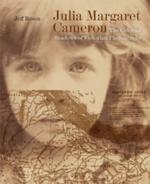Julia Margaret Cameron’s photography unfolded in the shadow of the 1857 Indian Uprising, the momentous anticolonial revolt against British rule. Jeff Rosen situates Cameron, best known for her portraits of the Victorian elite, at the centre of a colonialist culture in crisis, revealing how she first responded to the war in India by drawing upon her experience creating photographic albums, and then demonstrating how she began to generate imagery that visualised Britain’s imperial power. In this book, Rosen examines how Cameron and her family processed news of the rebellion alongside former colonists and government officials, men such as Sir John Herschel, Lord Lansdowne, Thomas Babington Macaulay, and her husband, Charles Cameron. He also demonstrates how Cameron’s artistic choices were inspired by the fine art criticism associated with the Arundel Society and the South Kensington Museum. In the process, Rosen analyses the symbolism in Cameron’s portraits, the political codes in her imagery of widows and orphans, and the historical narratives that informed her allegories of the revolt and its aftermath.

Julia Margaret Cameron : the colonial shadows of Victorian photography
ISBN: 9781913107420
Format: Hardback
Publisher: Paul Mellon Centre
Origin: GB
Release Date: July, 2024


